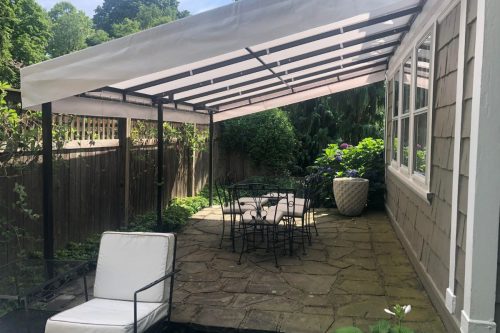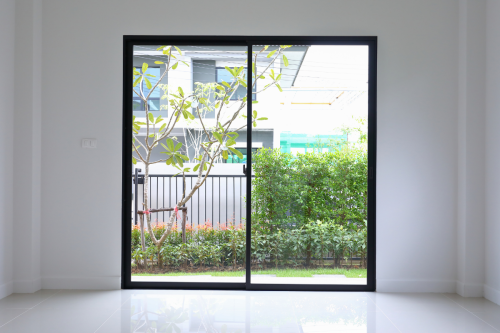Frameless windows have emerged as a sleek and contemporary architectural trend, transforming the way we perceive and experience living spaces. Unlike traditional windows that are encased in bulky frames, frameless windows offer a seamless and unobstructed view of the surrounding environment, creating an illusion of openness and expansiveness.
This architectural innovation is particularly appealing for those who seek a modern and minimalist aesthetic in their homes, as it eliminates the visual barriers imposed by conventional window frames, allowing natural light to flood the interiors and providing a connection with the outdoors.
The popularity of frameless windows extends beyond their aesthetic appeal, as they also contribute to energy efficiency by maximising sunlight penetration and improving insulation.
However, the decision to incorporate frameless windows into your living space requires careful consideration of various factors. While these windows offer undeniable aesthetic advantages, they may not be suitable for every architectural style or climate.
The absence of frames can impact the window’s structural integrity, and their installation may necessitate additional support features. Moreover, privacy concerns and the need for proper maintenance should also be taken into account.
What is a Frameless Window?
A frameless window is a contemporary architectural design element that challenges the conventional notion of windows encased within frames. Unlike typical windows surrounded by bulky borders, frameless windows feature large expanses of glass without visible framing elements, providing an unobstructed and seamless connection between indoor and outdoor spaces.
This innovative approach not only emphasises a clean and modern aesthetic but also aims to enhance the visual openness of a structure. Frameless windows often utilise advanced engineering techniques to securely support large glass panels, allowing for expansive views and an abundance of natural light to infiltrate interior spaces.
The absence of visible frames imparts a sense of sophistication and minimalism, making frameless windows a popular choice in contemporary architecture.
These windows are commonly used in residential, commercial, and institutional settings, where architects and designers seek to create a sense of spaciousness and harmoniously blend with the surrounding environment.
The design often involves using high-quality tempered glass that ensures durability and safety. Frameless windows can take various forms, from fixed windows that utilise fixed panels to sliding or folding configurations, providing flexibility in design while maintaining the core principle of a borderless and uninterrupted view.
This modern architectural element has become synonymous with a desire for elegance and openness, representing a departure from traditional design norms in favour of a more fluid and visually striking aesthetic.
Types of Frameless Windows
One common type is the fixed frameless window, where a large, non-operable glass panel is securely installed without any surrounding frame, providing a clear and unobstructed view. These windows are often used in locations where a continuous and expansive view is desired, and they contribute to a sense of openness in both residential and commercial spaces.
Frameless sash windows, or frameless double-hung windows, are also common. A traditional double-hung window has two panels that slide up and down in a frame. Frameless double-hung windows, however, have two stationary panels. They do not slide and do not have individual frames, but they do open by either pushing up or pulling down on the upper or lower panel.
Another popular type is the frameless sliding window, which allows for smooth and effortless horizontal movement of glass panels without the presence of visible frames. This design is particularly practical for spaces that require ventilation and easy access to outdoor areas. Frameless sliding windows enhance the connection between indoor and outdoor spaces while maintaining the modern aesthetic associated with frameless designs.
Additionally, frameless pivot windows have gained popularity for their ability to pivot open from a central axis, offering unique and stylish ways to introduce ventilation and natural light. These pivot windows often serve as focal points in architectural designs, combining functionality with an eye-catching aesthetic.
Overall, the various types of frameless windows provide architects and homeowners with a range of options to achieve a seamless and sophisticated look while meeting specific functional needs.
Benefits of Frameless Windows
Frameless windows offer a plethora of benefits that contribute to their growing popularity in modern architecture. One of the primary advantages is the unobstructed and expansive views they provide. By eliminating visible frames, these windows create a seamless connection between indoor and outdoor spaces, allowing natural light to flood the interior and offering picturesque views of the surroundings.
This enhanced visual access not only brings a sense of openness to the living or workspace but also fosters a closer connection with nature, promoting a more tranquil and immersive environment.
In addition to their aesthetic appeal, frameless windows contribute to energy efficiency. The absence of frames means that more sunlight can penetrate the interior, reducing the need for artificial lighting during daylight hours. Furthermore, the large frameless glass windows can be designed with advanced glazing techniques to improve insulation, helping to regulate indoor temperatures and decrease reliance on heating or cooling systems.
This dual benefit of maximising natural light and improving energy efficiency aligns with the sustainable design principles that are increasingly emphasised in contemporary architecture. Overall, the benefits of frameless windows extend beyond their stylish appearance, encompassing improved functionality, energy conservation, and an overall enhancement of the living or working environment.

Downfalls of Frameless Windows
While frameless windows offer an array of aesthetic and functional advantages, they are not without their drawbacks. One significant concern is the potential compromise in structural integrity. Traditional framed windows provide additional support and reinforcement, which may be lacking in frameless designs.
The absence of visible frames means that the glass panels bear the entire load, and in some cases, this can lead to challenges in terms of durability or safety. Reinforcement measures, such as thicker glass or additional support structures, may be necessary, adding to the complexity and cost of installation.
Privacy is another consideration when it comes to frameless windows. The large, unobstructed glass surfaces, while providing stunning views, can compromise the privacy of indoor spaces. This is particularly relevant in urban or densely populated areas where neighbouring buildings or passersby may have direct lines of sight into homes or offices.
Homeowners and businesses may need to implement alternative privacy solutions, such as blinds or curtains, which can somewhat negate the seamless aesthetic initially sought with frameless windows. Balancing the desire for openness and natural light with the need for privacy becomes a crucial aspect of the decision-making process for those considering frameless windows.
Maintenance and Care of Frameless Windows
Maintaining the pristine appearance and functionality of frameless windows requires careful attention to their unique characteristics. One of the primary considerations is the cleaning of large glass surfaces.
Given the expansive nature of frameless windows, regular cleaning is essential to remove dirt, fingerprints, and other contaminants that can accumulate on the glass. Using non-abrasive, glass-friendly cleaning solutions and soft materials is crucial to prevent scratches or damage to the glass surface.
Additionally, cleaning the surrounding areas, such as tracks and hinges, is important to ensure smooth operation and prevent the buildup of debris that could affect the functionality of sliding or pivoting frameless windows.
Regular inspections are also key to identifying and addressing any potential issues promptly. This includes checking for signs of wear and tear in the hardware, such as hinges, handles, and tracks. Lubricating moving parts as needed helps maintain smooth operation.
Consult with the manufacturer or a professional installer to understand specific maintenance recommendations for the type of frameless windows installed, as different designs may have unique requirements. Finally, protection measures, such as UV-resistant coatings on the glass, can help preserve the clarity and longevity of the windows by reducing the impact of sun exposure over time.
Should You Get Frameless Windows?
Deciding whether frameless windows are the right choice for a particular space involves a thoughtful assessment of both aesthetic preferences and practical considerations. If you desire modern and minimalist looks that prioritise an unobstructed view and abundant light, frameless windows can be an excellent fit.
Consider the architectural style of your home or building; frameless windows often complement contemporary design but may not harmonise as seamlessly with more traditional structures.
Assess the climatic conditions of the location, as frameless windows, while visually striking, may require additional structural considerations for stability and insulation. Additionally, contemplate the need for privacy and how the openness of frameless windows aligns with your comfort and style.
Choose Perth Window and Door Replacement Company for Quality Windows
In your quest to find quality products in the doors and windows market in Perth, the decision-making process becomes paramount to ensure that your space benefits from both aesthetics and functionality.
For those considering frameless windows in Australia or any other window replacements needed, Perth Window and Door Replacement Company stands out as a trusted and reliable choice.
With our expertise in providing innovative solutions and top-notch windows, paired with a commitment to customer satisfaction, We are a valuable partner in transforming your living or working space.
With a focus on quality craftsmanship and attention to detail, Perth Window and Door Replacement Company is well-equipped to guide you through the process, offering expert advice and tailored solutions to meet your specific requirements.
When it comes to elevating your space with high-quality windows, consider Perth Window and Door Replacement Company for a seamless and satisfying experience from consultation to installation. Contact us today to learn more!



